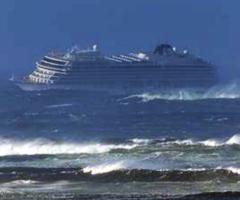 Last weekend, the cruise ship Viking Sky, with over 1,300 passengers and crew aboard, lost all four of its engines in high winds and rough seas off the Norwegian coast and came precariously close to drifting onto a rocky reef. Now the Norwegian Maritime Authority has concluded the engines’ failure “was directly caused by low oil pressure”. All four of the ship’s engines failed but the crew managed to restart one of them just in time.
Last weekend, the cruise ship Viking Sky, with over 1,300 passengers and crew aboard, lost all four of its engines in high winds and rough seas off the Norwegian coast and came precariously close to drifting onto a rocky reef. Now the Norwegian Maritime Authority has concluded the engines’ failure “was directly caused by low oil pressure”. All four of the ship’s engines failed but the crew managed to restart one of them just in time.
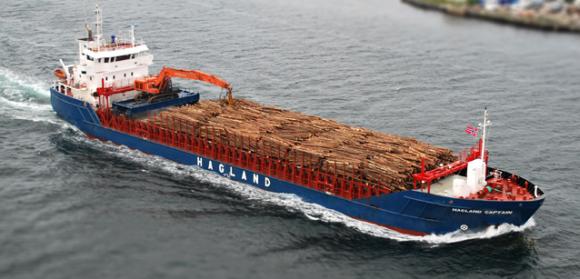 When the Viking Sky lost power in a storm off the coast of Norway this weekend, the 5,000 DWT geared lumber carrier Hagland Captain responded to the distress call and diverted to assist the cruise ship. The lumber carrier, however, would soon also need to be rescued.
When the Viking Sky lost power in a storm off the coast of Norway this weekend, the 5,000 DWT geared lumber carrier Hagland Captain responded to the distress call and diverted to assist the cruise ship. The lumber carrier, however, would soon also need to be rescued.
During the helicopter evacuation of the cruise ship’s passengers, two of the five rescue helicopters were briefly called away to rescue the nine crew of the Hagland Captain. The lumber carrier was roughly 5 NM miles away from the Viking Sky when it too lost power in the storm. The crew was rescued and the ship itself was later towed to safety.
The Haglund Captain is an interesting ship in her own right. Continue reading
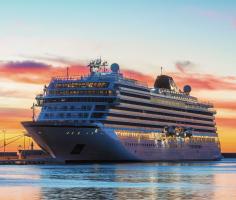
Viking Sky
In early March, a press release announced, “Viking Dominates Cruise Critic’s 2019 Cruisers’ Choice Awards.” Viking’s five 930 passenger ships won ten awards. The Viking Sky received First Place in six award categories within the small to mid-size ship group: Best Overall Ship, Best Cabins, Best Dining, Best for Public Rooms, Best Service and Best Value-for-Money. Viking Sky also beat ships of all sizes to win First Place as Best for First-Timers.
Unfortunately, Viking Ocean Cruises has had its problems. Continue reading

The ship was less than a half a ship-length off the rocks when it was able to anchor.
The cruise ship Viking Sky is now underway bound for the port of Molde, Norway, accompanied by a tug and support vessels. Prior to getting underway, 479 passengers were evacuated by helicopters, leaving 436 passengers and 458 crew members onboard. There are 20 reported injuries.
The ship lost power on Saturday and came perilously close to drifting onto the rocky shore in seas described as 8 meters (26 feet) high and winds of 38 knots. Norwegian Coast Guard officer Emil Heggelund told newspaper VG that the ship was 100 meters (328 feet) from striking an under the water reef and 900 meters (2,953 feet) from shore when was able to anchor in Hustadvika Bay. For context, as the ship is 228 m (748 ft), it was less than a half a ship-length off the rocks before it was able to anchor.
 According to Norwegian authorities, roughly 1,300 people are being evacuated from the cruise ship Viking Sky. The ship suffered engine problems and sent out a distress call and was drifting toward shore in high winds and rough seas off the western coast of Norway.
According to Norwegian authorities, roughly 1,300 people are being evacuated from the cruise ship Viking Sky. The ship suffered engine problems and sent out a distress call and was drifting toward shore in high winds and rough seas off the western coast of Norway.
The Norwegian newspaper VG is reporting that the ship was within 2.5 nautical miles from shore at around 4PM local time. Winds were reported to be around 38 knots with waves up to eight meters high. By 6:30 pm local time, the ship’s personnel were reported to have brought at least one of the ship’s four engines back on-line. By that time, around 100 passengers had been rescued according to Viking operations manager, Tor Andre Franck.
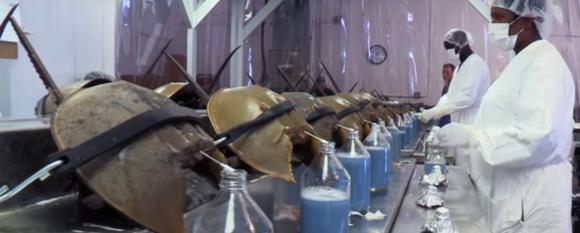 Horseshoe crabs are an ancient variety of arthropods, which are not actually crabs. Having remained largely unchanged in about 450 million years, the horseshoe crab is considered by many to be a living fossil. One of the reasons that horseshoe crabs have survived so long is that they have a highly robust immune system. Indeed, the horseshoe crab’s bright blue blood has remarkable antibacterial properties.
Horseshoe crabs are an ancient variety of arthropods, which are not actually crabs. Having remained largely unchanged in about 450 million years, the horseshoe crab is considered by many to be a living fossil. One of the reasons that horseshoe crabs have survived so long is that they have a highly robust immune system. Indeed, the horseshoe crab’s bright blue blood has remarkable antibacterial properties.
The good news for humans, and the bad news for horseshoe crabs, is that amebocytes in the horseshoe crab blood are highly sensitive to time amounts of bacteria and will coagulate around as little as one part in a trillion of bacterial contamination. Limulus Amebocyte Lysate, or LAL, a compound processed from horseshoe crab blood is used to test for contamination of anything that might go inside the human body: every shot, every IV drip, and every implanted medical device.
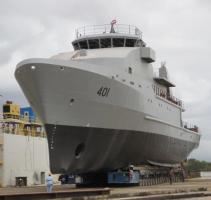 Last month we posted about the successful voyage of the Sea Hunter, a 132′ long autonomous drone trimaran from San Diego to Pearl Harbor, Hawaii, and back. Now USNI News is reporting that the Navy is moving quickly to field an unmanned “Ghost Fleet” — a new breed of armed unmanned surface combatants which will add more sensors and weapons to the current fleet.
Last month we posted about the successful voyage of the Sea Hunter, a 132′ long autonomous drone trimaran from San Diego to Pearl Harbor, Hawaii, and back. Now USNI News is reporting that the Navy is moving quickly to field an unmanned “Ghost Fleet” — a new breed of armed unmanned surface combatants which will add more sensors and weapons to the current fleet.
“These are 200- to 300-foot [vessels], 2,000 tons. I’m not sure what the final hull form will be, that’s what we are using today in terms of what the Ghost Fleet buy will be,” Rear Adm. Randy Crites, deputy assistant secretary of the Navy for budget, said during a press budget briefing.
 On Maryland’s Eastern Shore and in a handful of other ports around the country, there is a sailors’ tradition of burning your socks on the vernal equinox, the first day of Spring. If you have been wearing the same woolen stockings all winter, this may be a good time to commit them to the flames.
On Maryland’s Eastern Shore and in a handful of other ports around the country, there is a sailors’ tradition of burning your socks on the vernal equinox, the first day of Spring. If you have been wearing the same woolen stockings all winter, this may be a good time to commit them to the flames.
As ancient traditions go, this one is pretty new. According to Preservation Maryland, after a particularly snowy winter in 1978, Annapolitan Bob Tuner was anxious to shed his socks with the arrival of spring. He invited his colleagues to celebrate the end of winter by burning their socks after work, a symbolic goodbye to winter as the group of boat builders, sailors, and watermen intended to forgo wearing socks until the cold weather returned; and so a tradition was born.
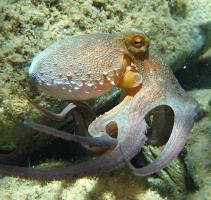 If a science fiction writer wanted to create a really bizarre alien space creature, using an octopus as a model would not be a bad place to start. After all, an octopus has three hearts, nine brains, and blue blood. The nervous system includes a central brain and large brain-like ganglion at the base of each arm which controls movement. The majority of neurons in an octopus are found in the arms, which can independently taste and touch and also control basic motions without input from the brain. An octopus also has the highest brain-to-body mass ratios of any invertebrates; greater than that of many vertebrates, as well. Not surprisingly, octopuses are highly intelligent.
If a science fiction writer wanted to create a really bizarre alien space creature, using an octopus as a model would not be a bad place to start. After all, an octopus has three hearts, nine brains, and blue blood. The nervous system includes a central brain and large brain-like ganglion at the base of each arm which controls movement. The majority of neurons in an octopus are found in the arms, which can independently taste and touch and also control basic motions without input from the brain. An octopus also has the highest brain-to-body mass ratios of any invertebrates; greater than that of many vertebrates, as well. Not surprisingly, octopuses are highly intelligent.
But it gets weirder. Unlike most other living creatures, octopuses, along with some squid and cuttlefish species, routinely edit their RNA (ribonucleic acid) sequences to adapt to their environment. That is RNA, not DNA.
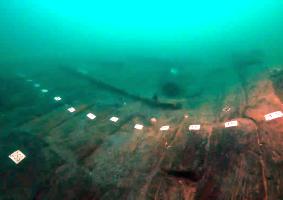
Photo: Christoph Gerigk/Franck Goddio/Hilti Foundation
Six years ago, we posted about the sunken lost city of Thonis-Heracleion in Abu Qir Bay near the Canopic Mouth of the Nile. The city sank into the Mediterranean around 1,2000 years ago and was only rediscovered in 1999. The city dates back roughly 2,700 years and was a major trading port for centuries.
Now marine archeologists have excavated a baris, a type of ship described by the Greek historian Herodotus in the 5th century BCE, from Thonis-Heracleion. The construction of the craft is unique. Here is what Herodotus wrote about the baris:
From [the acacia] tree they cut pieces of wood about two cubits in length and arrange them like bricks, fastening the boat together by running a great number of long bolts through the two-cubit pieces; and when they have thus fastened the boat together, they lay cross-pieces[81] over the top, using no ribs for the sides; and within they caulk the seams with papyrus. Continue reading
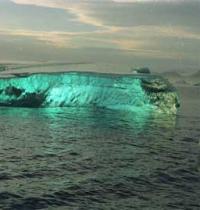 While most icebergs are whiteish-blue, they can be a range of colors, including emerald green. Indeed, in Samuel Coleridge’s Rime of the Ancient Mariner, the mariner describes how “ice, mast-high, came floating by, as green as emerald.”
While most icebergs are whiteish-blue, they can be a range of colors, including emerald green. Indeed, in Samuel Coleridge’s Rime of the Ancient Mariner, the mariner describes how “ice, mast-high, came floating by, as green as emerald.”
Why are some icebergs green? In time for St. Patrick’s Day, a paper in the American Geophysical Union journal JGR Oceans, titled “Green Icebergs Revisited” by researchers led by Stephen Warren, a glaciologist and emeritus professor at the University of Washington, offers a new theory about how these verdant icebergs come to be.
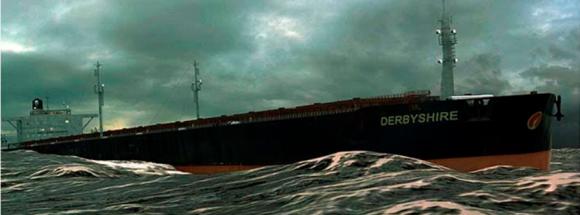 The disappearance of the Capesize bulk carrier MV Derbyshire in Typhoon Orchid shocked the shipping industry. How a new, large and well-built ship with a trained crew could have simply vanished became a mystery that would take more than 20 years to solve.
The disappearance of the Capesize bulk carrier MV Derbyshire in Typhoon Orchid shocked the shipping industry. How a new, large and well-built ship with a trained crew could have simply vanished became a mystery that would take more than 20 years to solve.
On Monday, March 18th, New York’s Shiplore is screening Trapped in Typhoon Alley, episode one of a new documentary series “Disasters at Sea” produced by Exploration Production Inc. in association with Smithsonian Networks and Discovery Channel (Canada). The documentary looks at the sinking of the MV Derbyshire in 1980 and the two decades of investigations which followed before the mystery of her sinking was finally solved. I was fortunate enough to appear briefly as an expert commenter in the documentary. I will be providing additional commentary on the sinking and investigations before and after the documentary.
If you are in the area, stop by 80 White Street, Monday, March 18th at 7:30 PM.

USS Fort McHenry, a US Navy Whidbey Island-class dock landing ship, with over 700 sailors and Marines aboard, has spent the last two months at sea without a port-call. The reason? There has been an outbreak of parotitis, a virus with symptoms similar to the mumps.
Until CNN asked about the time the ship had been at sea, the Navy had not disclosed that the vessel was effectively being quarantined. The illness first broke out in December, with the most recent case being reported on March 9. So far, only about 25 of the more than 700 aboard have caught the virus.
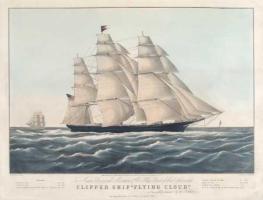 During Women’s History Month it is a worthwhile remembering Eleanor Creesy, the navigator of the clipper ship Flying Cloud, who with her husband, Captain Josiah Creesy, set world sailing records for the fastest passage between New York and San Francisco.
During Women’s History Month it is a worthwhile remembering Eleanor Creesy, the navigator of the clipper ship Flying Cloud, who with her husband, Captain Josiah Creesy, set world sailing records for the fastest passage between New York and San Francisco.
Eleanor Prentiss was born in 1814, in Marblehead, Massachusetts, the daughter of a master mariner, who taught his daughter the art and science of navigation. Eleanor knew how to use a chronometer and a sextant and how to make a sight reduction. In 1841, Eleanor married Captain Josiah Perkins Creesy. The couple sailed together on the ship Oneida in the China trade. Josiah was captain of the ship but Eleanor was the navigator.
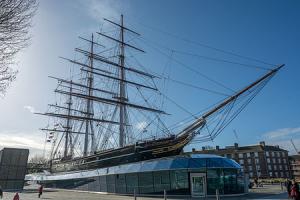 In February 1869, one hundred and fifty years ago, construction of the composite clipper ship Cutty Sark began on the banks of the River Clyde for the Jock Willis Shipping Line. The clipper ship sailed on its first voyage a year later in February 1870.
In February 1869, one hundred and fifty years ago, construction of the composite clipper ship Cutty Sark began on the banks of the River Clyde for the Jock Willis Shipping Line. The clipper ship sailed on its first voyage a year later in February 1870.
The Cutty Sark was one of the last tea clippers to be built, was one of the fastest and, perhaps most remarkably, is one of only two clipper ships to survive today. Now fully restored in a drydock in Greenwich, UK, the historic tea clipper is the centerpiece of a year-long celebration of its 150th anniversary.
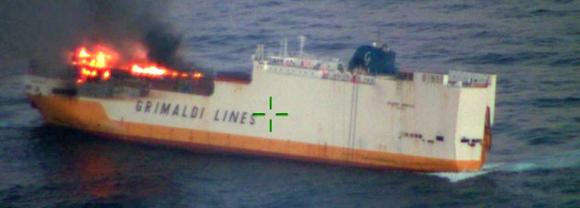 Another container fire has claimed another ship. On Sunday, a fire broke out in a weather-deck container on the roll on/roll off container ship MV Grande America while in the Bay of Biscay, 150 miles off the French coast. The fire quickly spread to other containers and to vehicles on the ro-ro deck. The captain ordered the crew of 27 to abandon ship. A lifeboat was launched but was damaged in heavy seas.
Another container fire has claimed another ship. On Sunday, a fire broke out in a weather-deck container on the roll on/roll off container ship MV Grande America while in the Bay of Biscay, 150 miles off the French coast. The fire quickly spread to other containers and to vehicles on the ro-ro deck. The captain ordered the crew of 27 to abandon ship. A lifeboat was launched but was damaged in heavy seas.
Fortunately, HMS Argyll, a Royal Navy ‘Duke’ Class frigate, was in the area and was diverted to rescue Grande America’s crew. The rescue lasted eight hours in rough conditions. The crew were taken to the French port of Brest. Some of the crew required hospitalization, but no life-threatening injuries were reported.
The French authorities dispatched a Falcon 50 maritime surveillance plane to the scene. A fire fighting salvage tug attempted to bring the fire under control. Nevertheless, France’s Marine Nationale reported today that Grande America sank in the Bay of Biscay in 4,600 meters of water. MV Grande America was 28,000 DWT and operated by Grimaldi Group.
It is remarkable how little we really know about orcas, also known as killer whales. In January, a team of NOAA scientists located and began to study a likely new species of orca about 60 miles off the coast of Cape Horn, Chile, at the very tip of South America. The species referred to as Type D, looks quite different from other orcas, with a more rounded head, a pointier and narrower dorsal fin, and a very small white eye patch.
The Type D was type D killer whales, were previously known from amateur photographs, fishermen’s descriptions, and one mass stranding—but never encountered in their natural state by cetacean experts.
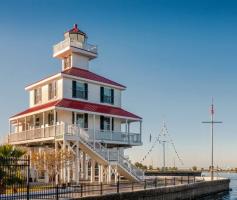
New Canal Lighthouse
We recently posted about a planned statue honoring Kate Walker, the lighthouse keeper of the Robbins Reef Light in New York harbor for close to 35 years. Kate took over as keeper when her husband died of pneumonia in 1886. Oddly enough, in the 1800s, when women weren’t allowed to vote or own property, they could become lighthouse keepers.
Curbed New Orleans has posted an article about the female lighthouse keepers of the New Canal Lighthouse, on Lake Pontchartrain in New Orleans, LA. They quote Lake Pontchartrain Basin Foundation Education Center director Chris Cook, who said, “Across the country, it wasn’t unusual for the man to die and the wife to take over. It is unusual that it happened so many times in the New Orleans area.”
 Recently, an official with the Trump administration testified repeatedly at a hearing of the House Natural Resources subcommittee that the firing of commercial air guns under water every 10 seconds over a period of months in search of oil and gas deposits would have next to no effect on endangered right whales. Right whales use echolocation to communicate, feed, mate and keep track of their babies.
Recently, an official with the Trump administration testified repeatedly at a hearing of the House Natural Resources subcommittee that the firing of commercial air guns under water every 10 seconds over a period of months in search of oil and gas deposits would have next to no effect on endangered right whales. Right whales use echolocation to communicate, feed, mate and keep track of their babies.
Despite testimony that the loud noises caused stress in the whales, lowered resistance to disease and was likely to interfere with the reproduction of the highly endangered whales, the administration, represented by Chris Oliver, an assistant administrator for fisheries, argued that there was no conclusive evidence that the seismic testing had ever actually killed a right whale. Oliver described the noise from commercial air guns as “sub-lethal.”
 New York City has announced a new statue of the late Robbins Reef Lighthouse keeper Katherine Walker which will be installed at the Staten Island Ferry landing.
New York City has announced a new statue of the late Robbins Reef Lighthouse keeper Katherine Walker which will be installed at the Staten Island Ferry landing.
Though standing only 4’10” tall and weighing around 100 pounds, Katherine Walker served as the keeper of the Robbins Reef Lighthouse for 35 years, following the death of her husband. In addition to the arduous task of keeping the light burning, she also rowed across the choppy waters of Upper New York harbor, a mile each way, to take her two children to school on Staten Island, weather permitting.
An immigrant from Germany, Kate met and married John Walker, who in 1883 was appointed keeper of the Robbins Reef Lighthouse. Kate found herself living on a reef inhabited solely by harbor seals. (Robbins Reef comes from the early Dutch name, “Robyns Rift,” or Seal Rocks.)
From SailNorthEast: In 1886 John Walker died from pneumonia, leaving Kate, now 38 and a widow with two teenaged children. His last words to her were not romantic but they were prophetic: “Mind the light, Kate.” And she did — from that day on, every single day, for more than three decades.
